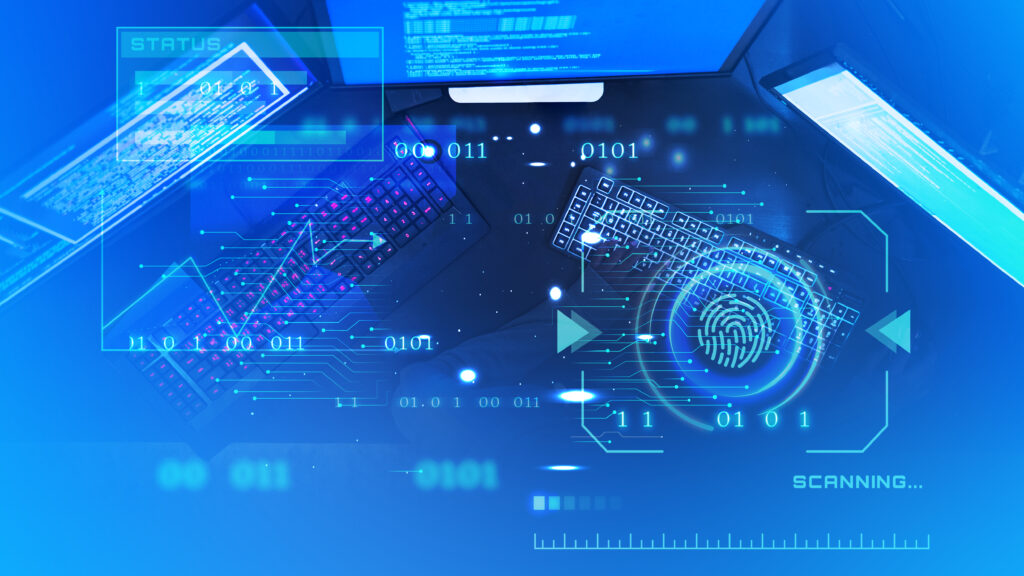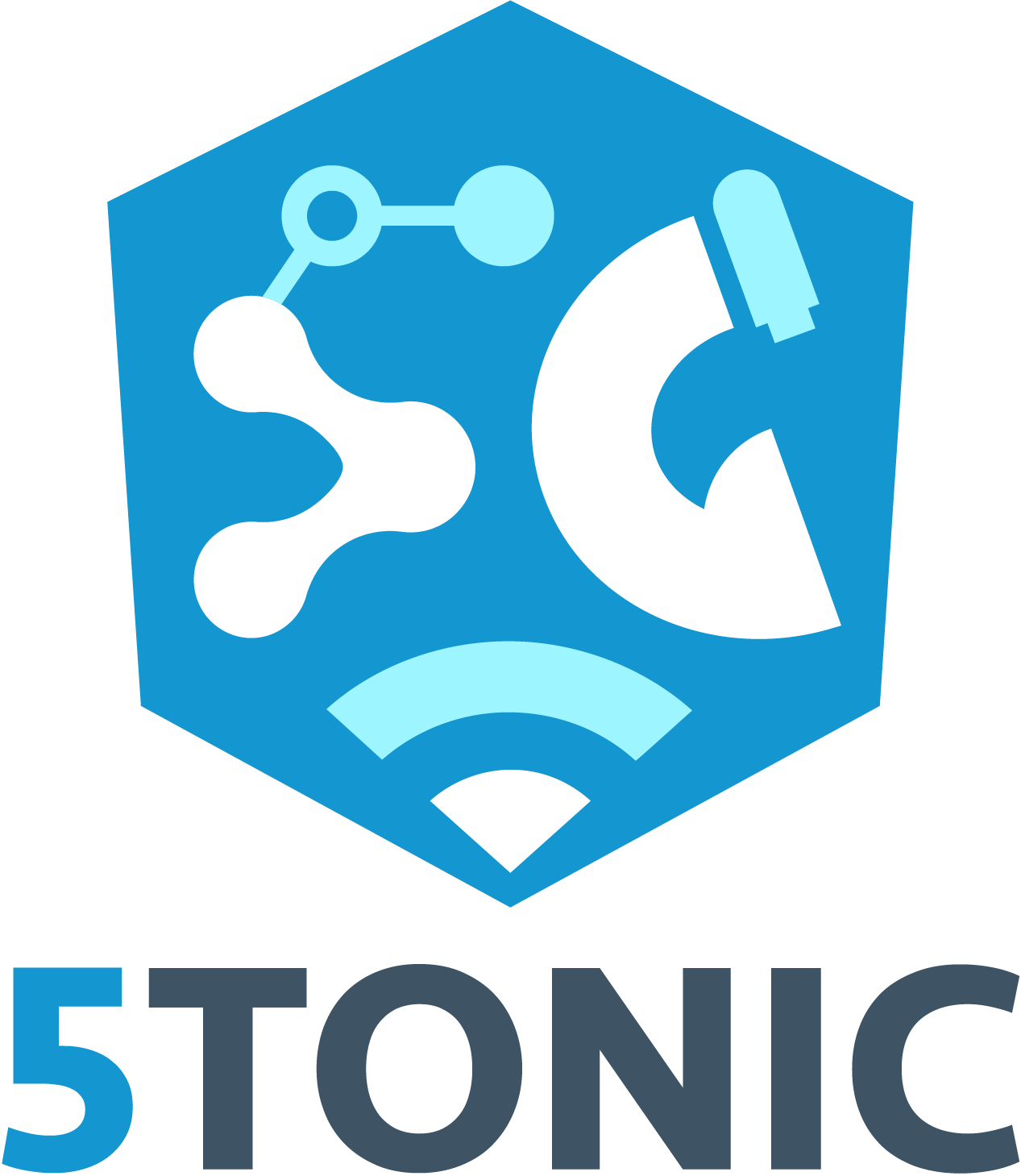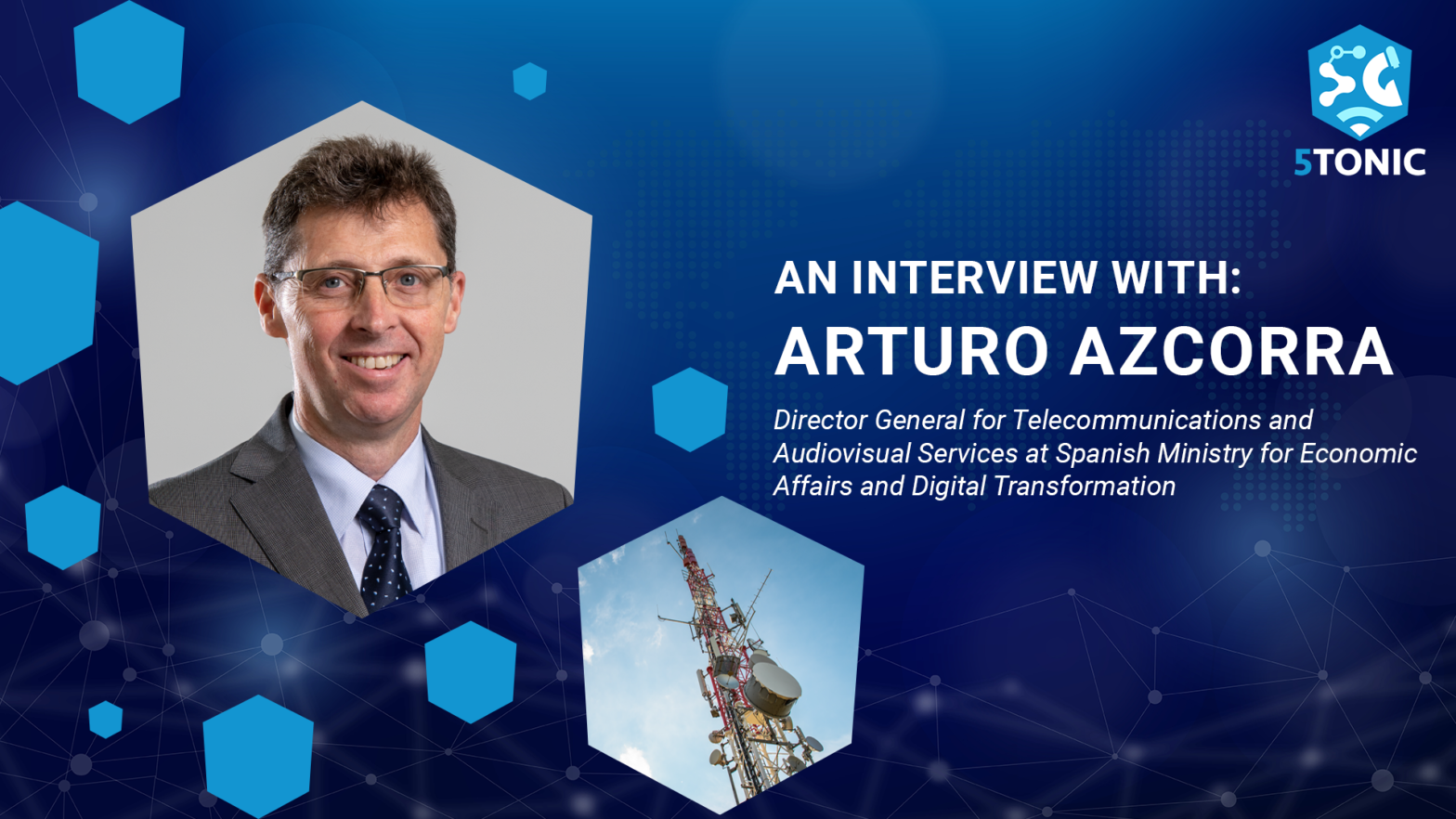Interview with Arturo Azcorra
New General Director of Telecommunications and Management of Audiovisual Communication Services of the Secretary of State for Telecommunications and Digital Infrastructure of the Ministry of Economic Affairs and Digital Transformation, since April 2021.
Professional experience in your new position
Which are your duties as general director of telecommunications and audiovisual services?
The General Directorate is responsible for the regulation, inspection and policy development of the telecommunications sector.
At the regulatory level, we are working on the new General Telecommunications Law, which draft law has been recently approved by the Council of Ministers, which transcribes the European Electronic Communications Code and with which we hope to continue encouraging investment in networks. We are also working on the preliminary draft of the 5G Cybersecurity Law.
We also have provincial Telecommunications Inspection Headquarters that carry out inspection and control tasks of radioelectric installations, technical inspection of the installations prior to commissioning and location, identification and elimination of harmful interference, among other tasks.
Moreover, we have competences over the Audiovisual Sector. The General Audiovisual Communication Bill has just been approved and we are developing the Spain Hub Audiovisual Plan, which aims to turn Spain into the world platform for the audiovisual production in Europe.
What are the keys to advancing the development of technologies such as 5G through public-private collaboration?
In 2020 we published the Strategy to boost 5G technology, which is the continuation of the National 5G Plan that was on from 2018 to 2020. In the Strategy, the first line of action is the assignment and management of the spectrum, i.e. making available the necessary spectrum resources to the operators, so they can carry out the deployment of 5G networks.
In 2018, we already carried out the auction process for the 2.6 GHz band. Last July, we did the 700 MHz band, which will be a very important step because it included specific coverage milestones in towns with more than 20,000 inhabitants and infrastructures, such as airports.
The Strategy to boost 5G technology foresees a public investment of €2,000 million till 2025, from which €1,400 million are included in the Recovery, Transformation and Resilience Plan, which runs until 2023. In addition, we have recently presented a roadmap with measures to encourage the deployment of 5G networks and services.
The financing of pilot projects has been also very important in this public-private collaboration, since this type of technology requires a strong investment in research that takes a long time to pay back. We have financed a total of 10 pilot projects, in eight Autonomous Communities in Spain, involving more than 120 use cases and a budget of more than 60 million euros. According to the 5G Observatory of Europe, we are the European country with the largest number of projects of these characteristics.
Besides the pilots, we have included some use cases that will revolutionize our companies and people’s lives. From transparent access to railway stations or digital registration of railway staff, through emergency robotics, rescuing people with UAVs, development of 5G Fairs, or real-time sensorization for the efficient management of resources, such as water or electricity, to the massive download of multimedia content and all this, at any time and from anywhere.

Current technological landscape
What do you think are the current trends which the ICT industry is moving towards?
After the revolution we have been immersed during the COVID19 pandemic, any public or private organization is thinking about technology as the main lever to help them grow. It is no longer just a matter of thinking about new business or digital opportunities, but the current challenge is to define the digital strategy that allows organizations to quickly connect with society, citizens or customers.
Therefore, the main ICT trends will be related to digitalization and technological innovations that will increase results or enhance the positioning.
There are many innovations that will experience a great development in the coming years. For example, apart from 5G technology, I would highlight Artificial Intelligence (AI), Edge Computing, the digital twins and cybersecurity.
Which technologies do you think have experienced the greatest impact growth in today's society?
One of the biggest changes that has occurred in society is the ease of communication between all types of devices with fast and instant access to information. The arrival of 5G and Artificial Intelligence enhance a situation that evolves step by step and integrates into our lives without us even noticing it.
We all use broadband networks, both fixed and mobile, to access the Internet. Also to use the fourth or fifth generation mobile network to communicate, to watch multimedia content, to play online or to send messages.
In other words, ICTs facilitate connectivity (now at 5G speeds) through smart devices with high power, reasonable cost and easy-to-use.
In terms of impact on society, we should distinguish three major technological milestones:
- The evolution of telecommunications.
- The increase in computing capacity and speed.
- Artificial Intelligence and data processing.
What Kind of technology do you think will have the greatest development in the coming years?
It is expected that in the coming years we will see products arriving to the market that, not so long ago, sounded like science fiction. Brain-controlled prostheses, flying wind turbines, smart clothing and fabrics, technologies implanted in the body or 3D printing of organic material are some examples of what technologies such as Big Data, Artificial Intelligence and Blockchain can contribute.
Where is 5G heading now that it is already in the process of deployment? What work do you think the public and private entities, that are focused on 5G research and its development, have to do to position Spain at the forefront of telecommunications and technological development?
An appropriate environment has been created to enable this deployment, both in terms of taxation and at the regulatory level with the General Telecommunications Law.
Referring to this massive deployment phase, the government’s obligation is to facilitate that this technology reaches every corner of Spain as soon as possible. To achieve this, we are going to encourage the deployment of 5G networks thanks to the funds from the Recovery Plan. In addition, and in order to promote leadership in research and innovation, we´ve just launched the UNICO 5G R&D program, an ambitious public-private research program in advanced 5G and 6G with an investment of €95.2 million.
UNICO 5G R&D has been designed for public research groups to collaborate with large companies and SMEs, allowing collaborative and targeted research for the development of innovative products and services to be introduced into the market.

Where do you think Spain is in relation to the rest of the EU countries in terms of progress with 5G?
We are in an advantageous position thanks to our excellent connectivity networks. We are the third country in Europe with the best broadband coverage. 5G technology requires networks that support large amounts of data and we have them. That´s an advantage! As I mentioned before, we are the European country with the largest number of 5G pilot experiences, which allows for exploration and knowledge of the technology that is essential for developing 5G applications and services. And, finally, we want to boost leadership in research through the UNICO 5G R&D program, so we can continue being leaders in the next generation of digital infrastructures: 6G.
Do you think 5G is already revolutionizing the industry or it is still time away before we start to see a real impact of what this kind of networks entail?
We are still some time away from seeing the real revolution that 5G will bring to the industry, which will progressively reach different stages in different industries. When the most advanced latencies work, it will be possible to develop applications in areas, such as healthcare. When we add to that the connection with devices, we will be already talking about large, massive projects in the field of agriculture. Regarding automation, we are already seeing robots moving parts in the assembly environment, so we can already speak about virtual chains. The «fluid factory» or wireless factory is a huge leap. In the same way, we can take a leap in predictive maintenance. We already have real cases in factories that are being deployed now. The Artificial Intelligence layer, that can be used, allows us to anticipate the future and making decisions.

Do you think 5G networks may be propense to cybersecurity breaches?
We are working to develop a regulatory and administrative framework to boost the deployment of 5G technology. The first step is to create an adequate framework of trust and security. From Spain and since the very beginning, we have promoted a common approach throughout the European Union to cybersecurity in 5G networks.
In regards of this position, we´ve taken as a reference the set of instruments or toolbox adopted by the European Union in February, to develop a preliminary draft of the 5G Cybersecurity Law.
The purpose of this standard is to build a secure and diversified supply chain in 5G networks and services, providing citizens and businesses with the assurance that our digital transformation unfolds while minimizing potential technological and non-technological risks.
How do you think manufacturers, infrastructures and programmers will have to adapt to prevent any security issues in these networks? Lately, we have seen that several mobile devices have come onto the market that take advantage of 5G technology. Is this true or just a marketing strategy? Do you think that there are still advances to be made by manufacturers and network providers before this technology can be fully exploited?
I would say that in addition to being an enabler, 5G is an incentive technology. What we are seeing in Spain is that 5G is pushing verticals in robotics or logistics thanks to a more agile connectivity. Now, the bottleneck is in the interfaces, specifically in the computing capabilities of the machines. But many doors are opening.
In Spain, the deployment of 5G networks will begin to speed up as operators already have some of the frequencies that the European Union established as priorities for the development of 5G. Specially the 700 MHz band, which was tendered last July.
There is no doubt that technological renewal is going to make us to do things differently, not that we change the technology with which we do the same things. We need to combine collaboration between companies, universities, and start-ups. However, the key will be the talent. If we don’t have the profiles we need, with very different skills to those we have now, we will have ideas, but not someone who will apply them.

Do we have technologies that are currently fully based on 5G networks?
Each day more projects from diverse industries begin to have applications of this technology in their day-to-day. A process that will only accelerate over the coming months and years.
For once, we have a technology that covers a wide spectrum of use cases, from household consumption or vehicles to the more industrial work. And it is in this last segment where, for the first time, a technology is going to cover needs that previously fell short.
Technologies that have to use microsecond response times, need the reaction speeds offered by 5G. Latency, bandwidth, the number of devices that can be connected but, above all, the possibility of the network adapting to the needs.
Network layers can be created so that different applications can operate. The need for millisecond latency makes no sense for humans. This level of precision has application in machines. This latency and bandwidth are where it is going to be most noticeable. In addition, the Internet of Things (IoT) is going to allow us to sensor millions of devices in small environments, extract information from many sources and process it.
Recently, the White Paper on the European perspective of 6G was published, and 5TONIC has participated. Do you think this perspective is realistic? What revolution do you think 6G could bring?
In 2022, the features and timing of 6G are not clearly defined. Although, it is expected to be commercialized in 2028 by some CSP pioneers. 6G will enhance recent 5G capabilities and may offer higher theoretical peak data rates (e.g., from 100 Gbps to 1 Tbps), lower latency (e.g., 0.1 msec latency), higher connection density, and energy efficiency (e.g., 10 times more efficient).
In the absence of knowing what their final applications will be, there is already talk of several fields that will be enhanced with this new generation of networks: extended reality, including holographic communications; Artificial Intelligence, automated and interconnected; and energy efficiency, which will be at ultra-low consumption levels.
The intention is that the first installations will already be able to reach speeds five times higher than the theoretical maximum of 5G, generating near real-time transmissions much needed in sectors, such as medicine or automobiles. Download and upload speeds will multiply, reaching peaks of up to 1,000 Gbps. This will support future multimedia formats and facilitate data exchange without appreciable delays in reception.
Many technologies and concepts from 6G research will make their way into various wireless systems. 5G networks will also be modernized and democratized to become software-based networks, according to customer demands, and 6G will benefit from this.
The impact of 6G is expected to be high because the Agenda 2030, which includes 17 Sustainable Development Goals by the United Nations, has a strong impact on mobile technologies, including 6G. Many of these societal issues and ambitious goals will lead to technologies, such as Edge Computing and AI. These will be part of 5G or 6G cellular deployments. Design and research for 6G has already begun with many industry associations and academic and commercial organizations. 5G may solve some of these challenges, but 6G is essential for continued growth and problem solving in the 2030s.
Although commercial deployment of 6G is still some time away, there may be results from 6G research projects that can be applied to other wireless areas before 6G itself. For example, THz wireless systems.
Arturo Azcorra
Ministry of Economic Affairs and Digital Transformation
*This blog may contain content that reflects the opinion from influencers, but not necessarily that of 5TONIC or its members.

